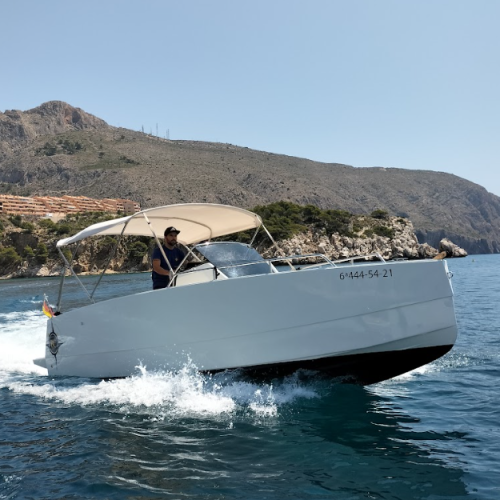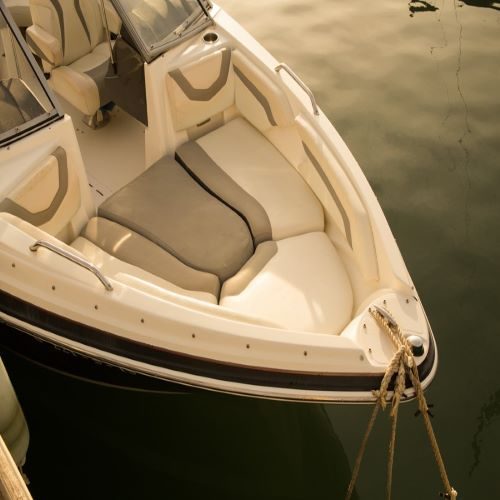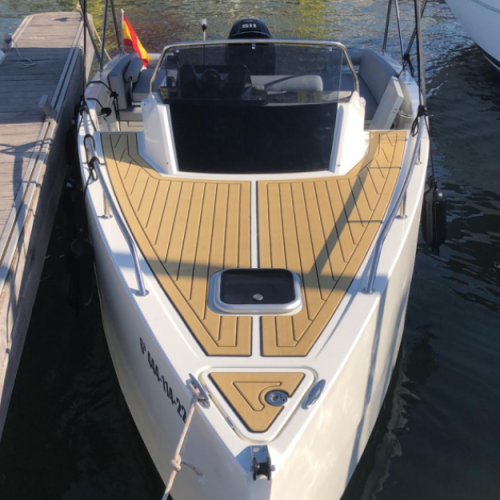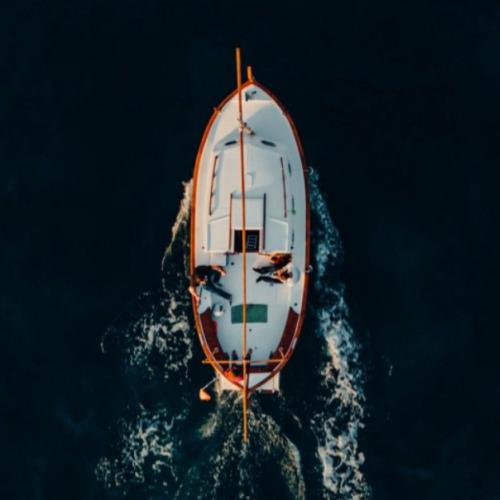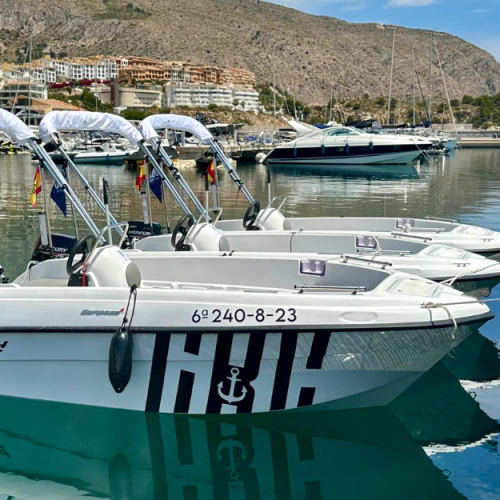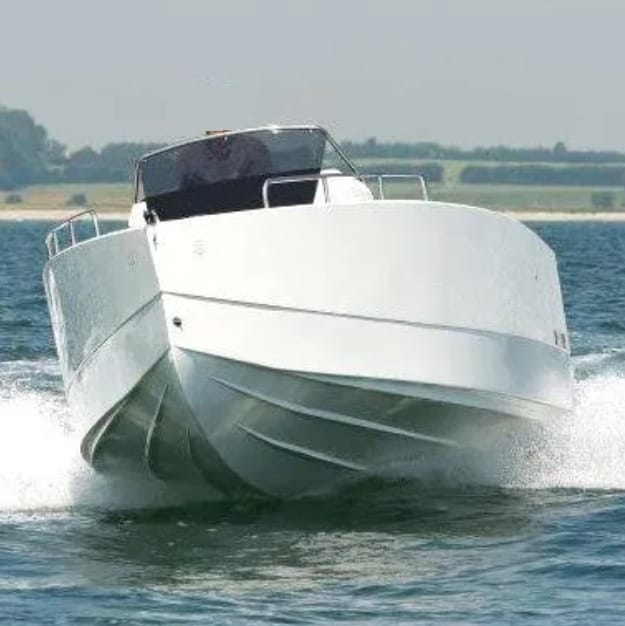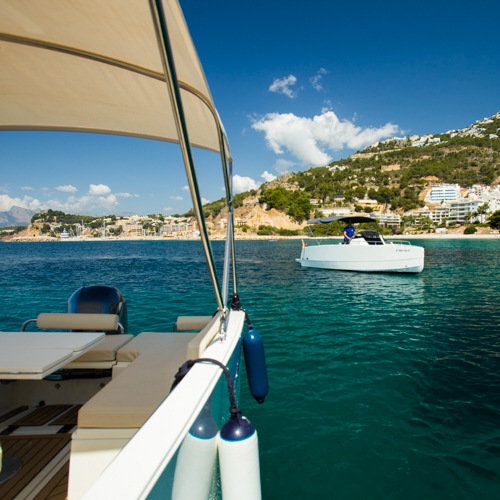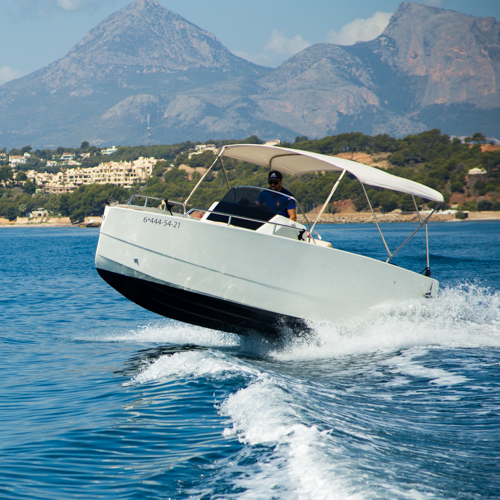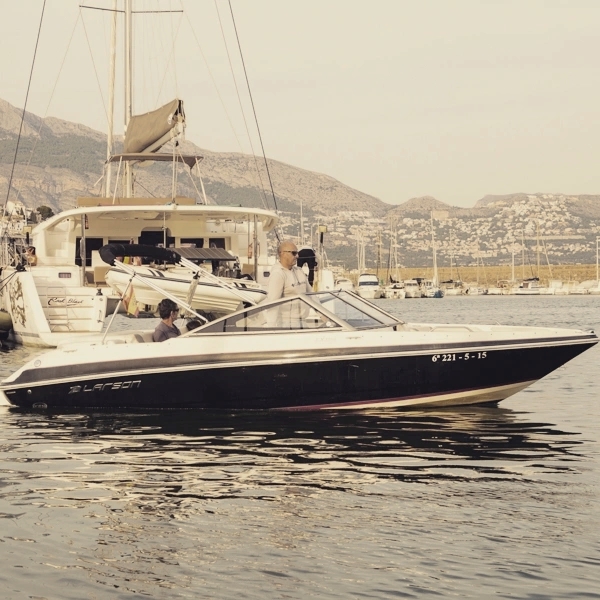
BOAT RENTAL ALTEA
Nuva Yachts M6 (Martina & Co)
Rental with Navigation License or superior.
Boat with an innovative design, from the prestigious Nuva yatchs brand, thanks to this design we get a large space in the stern area, where we have a large area to eat, have a drink or a large solarium, it also has a fixed bow solarium, Probe, GPS and outdoor shower.
Larson 225 LXI (Arcangel)
PNB Basic Navigation Pattern
If what you are looking for is a fast and comfortable boat, this is yours, thanks to its power of 260CV, we can move quickly from one area to another to get the most out of our day, this boat is inboard, so it has of a large bathing platform.
Nuva Yachts M6 (Canalla)
Rental with Navigation License or superior.
A boat of high construction quality, from the well-known brand Nuva Yachts, the M6 model, suitable for Navigation License, an Innovative design that is the trend in recent years in boat designs, thanks to this hull shape, we manage to take advantage maximizing the most habitable deck space.
Llaút Menorquín 38 (Galatea)
Rent with PNB o superiror, Boat Captain optional.
Discover the most beautiful corners of our coasts in the most original way aboard this typical Mediterranean boat, it has a large deck to achieve a pleasant stay, with all the comforts you need.
Includes paddle board
CBC
Without license
Perfect boat for day trips accompanied by family and friends with which you will spend a fantastic vacation. Capacity for 5 people. Comfortable, easy to handle, elegant and fun. You will be able to discover the most hidden coves, offering you a vision of the Costa Blanca that you will never forget.
Nuva Yachts M6 (Martina & Co)
Rental with Navigation License or superior.
Boat with an innovative design, from the prestigious Nuva yatchs brand, thanks to this design we get a large space in the stern area, where we have a large area to eat, have a drink or a large solarium, it also has a fixed bow solarium, Probe, GPS and outdoor shower.
Larson 225 LXI (Arcangel)
PNB Basic Navigation Pattern
If what you are looking for is a fast and comfortable boat, this is yours, thanks to its power of 260CV, we can move quickly from one area to another to get the most out of our day, this boat is inboard, so it has of a large bathing platform.
Llaút Menorquín 38 (Galatea)
Rent with PNB o superiror, Boat Captain optional.
Discover the most beautiful corners of our coasts in the most original way aboard this typical Mediterranean boat, it has a large deck to achieve a pleasant stay, with all the comforts you need.
Includes paddle board
Nuva Yachts M6 (Canalla)
Rental with Navigation License or superior.
A boat of high construction quality, from the well-known brand Nuva Yachts, the M6 model, suitable for Navigation License, an Innovative design that is the trend in recent years in boat designs, thanks to this hull shape, we manage to take advantage maximizing the most habitable deck space.
CBC
Without license
Perfect boat for day trips accompanied by family and friends with which you will spend a fantastic vacation. Capacity for 5 people. Comfortable, easy to handle, elegant and fun. You will be able to discover the most hidden coves, offering you a vision of the Costa Blanca that you will never forget.

ABOUT US
After the experience as co-owner of a nautical company, I now undertake this new project, putting into practice everything I have learned throughout my nautical journey to try to offer the best service to my clients. A whole life linked to the sea, where I started at a very young age in recreational boating, until 2009, when I finished my studies as a Higher Technician in Navigation, Fishing and Maritime Transport (High Height Skipper) and decided to turn my passion into my profession, passing through different maritime branches.
Barlovento Charter is a company dedicated to renting boats with and without skipper on the Costa Blanca.
At Barlovento Charter we offer the necessary advice and technical support so that all clients can enjoy the best experiences at sea. We also put professional knowledge at the service of clients so that they can discover the most atypical and beautiful places on our coast.
Renting a boat in Alicante to explore the coves of the Costa Blanca is one of the best options, since there are countless beautiful coves with crystal-clear waters that are difficult to access by land. Barlovento Charter is a company born in the Mediterranean with more than ten years of experience in the nautical sector. We are also located in the most central point of the coast, from where you can quickly travel to the best coves in the area. We have a large selection of quality boats with very competitive prices, adapted to your type of qualification. At Barlovento Charter we offer you professional advice, so that you can navigate safely, and we will also inform you of the most atypical and beautiful places in the area. Do not hesitate to contact us and we will resolve any questions.

